USS San Diego ACR-6 (1/3)
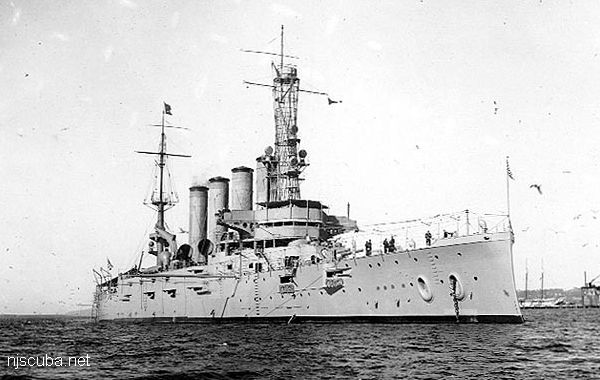
- Type:
- shipwreck, armored cruiser, U.S. Navy
- Built:
- 1904, Bethlehem San Francisco, San Francisco USA, as U.S.S. California
- Specs:
- ( 503 x 70 ft ) 13680 displacement tons
- Sunk:
- Friday July 19, 1918
explosion, probably struck a mine laid by U-156
officially 6 casualties, probably 30-40 in reality - GPS:
- 40°32.433' -73°02.484' (AWOIS 2008)
- Depth:
- 110 ft, starts at 65 ft
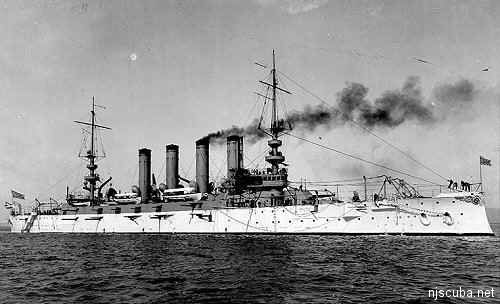
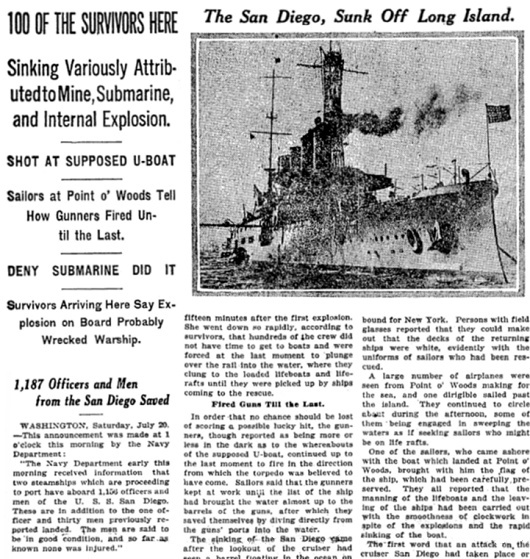
The second California ( Armored Cruiser 6 ) was launched 28 April 1904 by Union Iron Works, San Francisco, Calif.; sponsored by Miss F. Pardee; and commissioned 1 August 1907, Captain V. L. Cottman in command.
Joining the 2d Division, Pacific Fleet, California took part in the naval review at San Francisco in May 1908 for the Secretary of the Navy. Aside from a cruise to Hawaii and Samoa in the fall of 1908, the cruiser operated along the west coast, sharpening her readiness through training exercises and drills, until December 1911, when she sailed for Honolulu, and in March 1912 continued westward for duty on the Asiatic Station. After this service representing American power and prestige in the Far East, she returned home in August 1912, and was ordered to Corinto, Nicaragua, then embroiled in an internal political disturbance. Here she protected American lives and property, then resumed her operations along the west coast; she cruised off California, and kept a watchful eye on Mexico, at that time also suffering political disturbance.
California was renamed San Diego on 1 September 1914, and served as flagship for Commander-in-Chief, Pacific Fleet, intermittently until a boiler explosion put her in Mare Island Navy Yard in reduced commission through the summer of 1915. San Diego returned to duty as flagship through 12 February 1917, when she went into reserve status until the opening of World War I. Placed in full commission 7 April, the cruiser operated as flagship for Commander, Patrol Force Pacific Fleet, until 18 July, when she was ordered to the Atlantic Fleet. Reaching Hampton Roads, Va., 4 August, she joined Cruiser Division 2, and later broke the flag of Commander, Cruiser Force, Atlantic, which she flew until 19 September.
San Diego's essential mission was the escort of convoys through the first dangerous leg of their passages to Europe. Based on Tompkinsville, N.Y., and Halifax, N.S., she operated in the weather-torn, submarine-infested North Atlantic safely convoying all of her charges to the ocean escort. On 19 July 1918, bound from Portsmouth, N.H., to New York, San Diego was torpedoed by the German submarine U-156 southeast of Fire Island. The cruiser sank in 28 minutes with the loss of 6 lives, the only major warship lost by the United States in World War I.
-- from Navy historical records
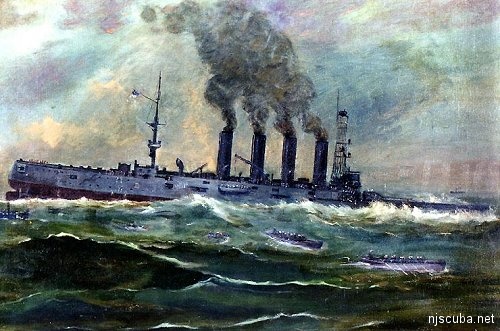

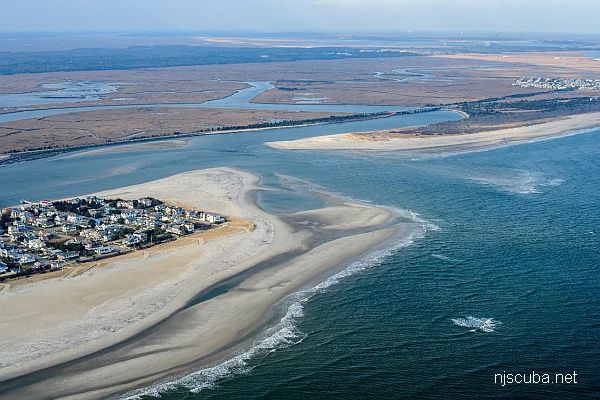
Questions or Inquiries?
Just want to say Hello? Sign the .